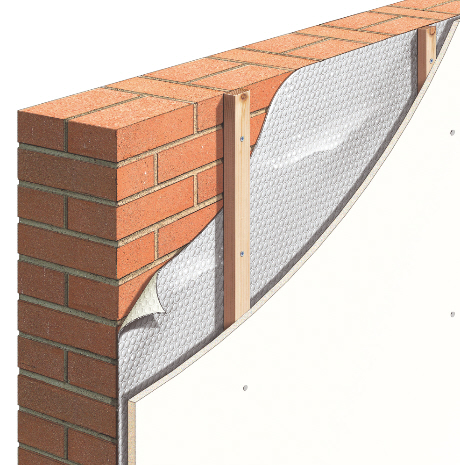How Much Does It Cost To Dry Line Walls?

Cost to Dry Line Walls
| job | Description | labour |
| 1 | Dry lining one wall of a bedroom which has one window, will require new skirting boards and foil-backed plasterboard which you want filled, not plastered. Decorating will need to be done afterwards. A radiator and electrical socket will need re-siting. 2 men 3 days to move the furniture, do the job, pay the plumber and electrician, cut the carpet and replace everything. | £975 |
| Plus materials etc. for the above | £120 | |
| 2 | The same job with bigger battens and 75mm insulation will add half a day’s work. add | £150 |
| Plus materials etc. for the above | £150 | |
| 3 | If you want it plastered another half a day.. add | £150 |
| 4 | If you want the whole room dry lining and plastering, insulation fitting, new skirts, and all furniture and carpets moving etc. That’s 2 men 5 days | £1450 |
| Plus materials etc. for the above | £900 |
Information Sheet on Dry Lining/Plasterboard
This is a bit of a misnomer because lots of people want it plastered, in which case it becomes wet lining, of course. Either way, “dry lining/plasterboarding” suggests a retrospective process undertaken to either hide / improve the current situation, i.e. to hide damp or exposed brickwork or fit new internal insulation.
If yours is one of the first two reasons, it would be very sensible to include the third anyway. You really can never have too much insulation.
Dry lining/plasterboarding is just fixing wood or metal “battens” to the wall and then fixing plasterboard to them. This is either filled or plastered, and then decorated. If you want insulation fitting, you can either fit thicker battens (let’s say 75mm as opposed to 25mm) with the same thickness of insulation slotted between them, or use insulation-backed plasterboard fixed to the 25mm thick battens.
That is relatively easy. The annoying bit is dealing with the reduction in room size and having to pay for new skirtings, architraving and possibly ceiling cornice, extending the door frames and window reveals and re-siting the electrical sockets, light switches and radiators.
To complete the job, you need a vapour barrier. This keeps warm, moisture-laden air inside your room (its moisture content isn’t tangible, it’s just a bit of science really). What you don’t want is for this moist air to pass through the plasterboard and condense on the insulation, battens or outside wall.
This is called interstitial condensation (there’s some more science for you). Either foil-backed plasterboard or a big old sheet of polythene will do the trick. The jury is still out on which is best.
Ask your builder about interstitial condensation. Watch him stutter and start to whimper, he won’t have a clue what you’re on about, bless him!
Related Jobs
FAQs 'traffic light' guide
-
What's easy about this job…
Open or CloseEverything. It's even fun!
-
What's tricky about this job…
Open or CloseStaying clean!
www.buildingsheriff.com
Copyright The Building Sheriff Ltd 2017